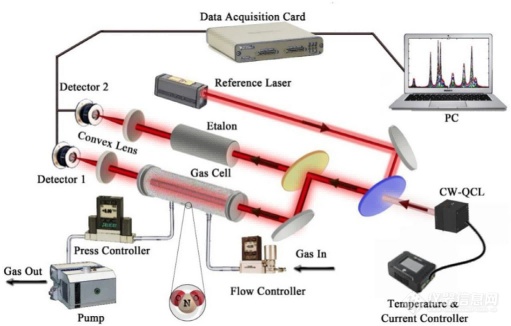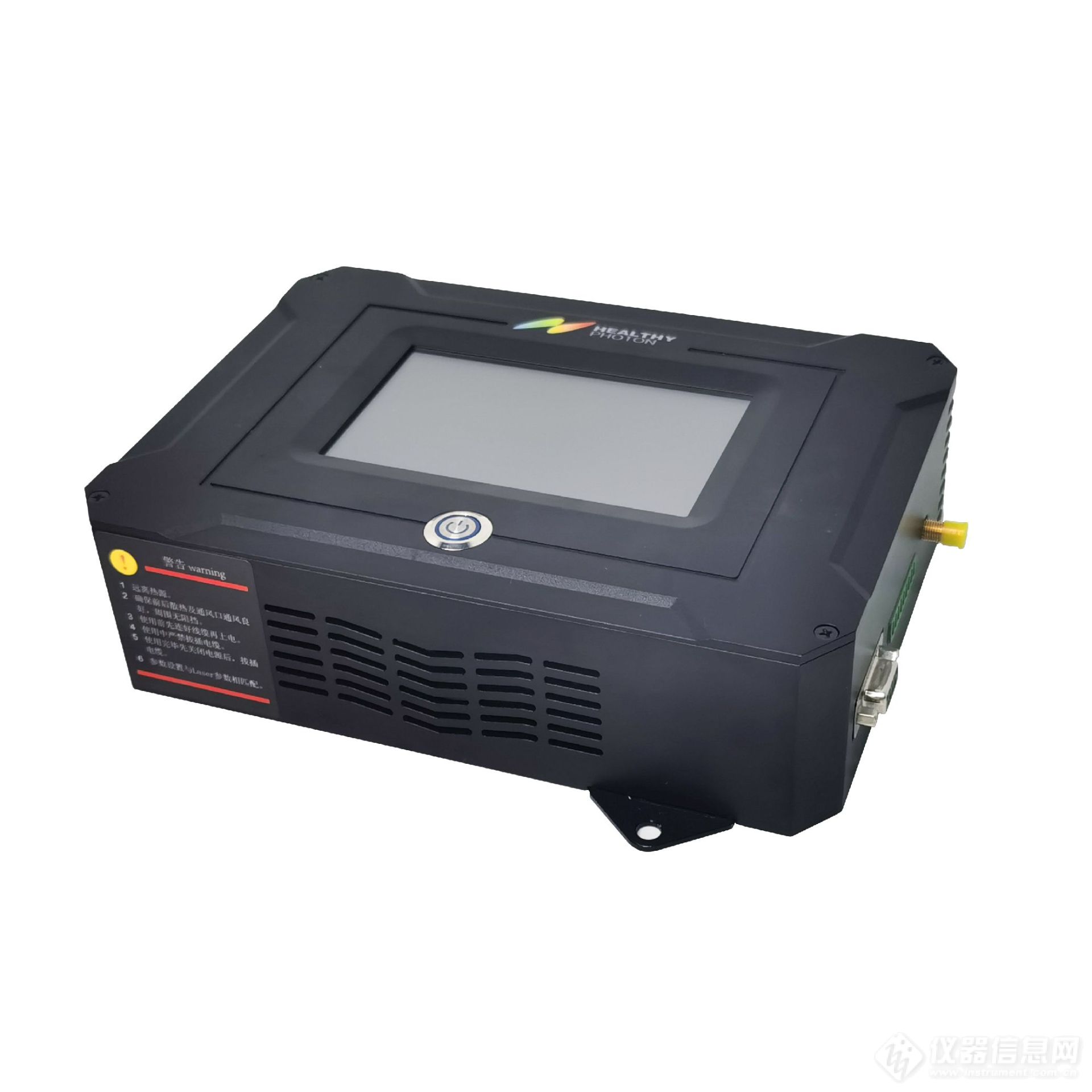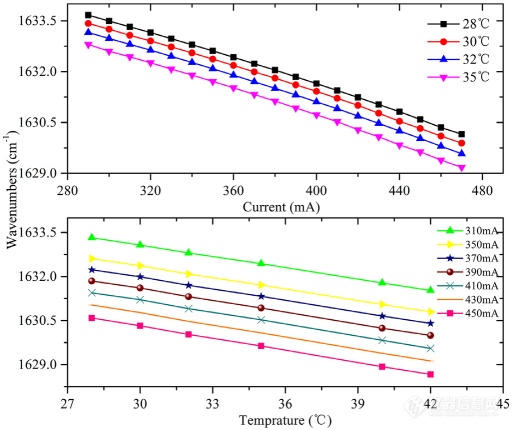Recently, a collaborative research team from Key Laboratory of Opto-Electronic Information Acquisition and Manipulation of Ministry of Education and Laser Spectroscopy and Sensing Laboratory, Anhui University, and HealthyPhoton Technology Co., Ltd. published a research paper titled Measurements of line strengths for NO2 near 6.2 μm using a quantum cascade laser spectrometer.
近日,来自安徽大学光电信息获取与处理教育部重点实验室、安徽大学激光光谱与传感实验室、宁波海尔欣光电科技有限公司的联合研究团队发表了一篇题为Measurements of line strengths for NO2 near 6.2 μm using a quantum cascade laser spectrometer的研究论文。
Research Background研究背景
Nitrogen dioxide (NO2) is a common pollutant that comes primarily from the emissions of burning fossil fuels, natural lightning, and microbial processes in soil. Atmospheric NO2 contributes to the formation of ground-level ozone. It can cause photochemical smog and lead to increased acidity of rain. Continuous exposure to high NO2 concentration may result in a wide variety of short- and long-term adverse health effects on the respiratory system of humans and animals. Therefore, developing a cost-effective and robust sensor system for NO2 monitoring is crucial.
二氧化氮是一种常见的污染物,主要来自化石燃料燃烧排放、自然雷电以及土壤中的微生物过程。大气中的NO2有助于地面臭氧的形成,可能导致光化学烟雾,并导致雨水酸度增加。持续暴露于高浓度的NO2可能对人类和动物的呼吸系统产生各种短期和长期的不良健康影响。因此,开发一种成本效益高、稳健的NO2监测传感器系统至关重要。
Many technical solutions have been developed for NO2 detection. The chemiluminescence and wet chemical analysis are commonly used for NO2 detection. However, these methods have a slow response time and suffer from low selectivity in discriminating between NO and NO2, which limit their application. Optical methods based on absorption spectroscopy provide powerful access for trace gas analysis with extremely high sensitivity, selectivity, and fast response. Laser-based absorption spectroscopy techniques in mid-IR molecular fingerprint region are ideal for trace gas analysis because most atmospheric species have strong fundamental vibrational transitions in this spectral region, which allows highly sensitive and selective detection of trace gases. The commercial available continuous-wave (CW) quantum cascade lasers (QCLs) in the mid-IR spectral region have been widely used for developing spectroscopic techniques for quantitative analysis of NO2.
已经开发了许多技术解决方案用于NO2检测。化学发光和湿化学分析通常用于NO2检测。然而,这些方法响应时间较慢,且在区分NO和NO2时选择性较低,限制了它们的应用。基于吸收光谱学的光学方法具有高度的灵敏度、选择性和快速响应,为痕量气体分析提供了强大的手段。基于中红外分子指纹区的激光吸收光谱技术对于痕量气体分析非常理想,因为大多数大气成分在该光谱区域具有强烈的基本振动跃迁,从而实现对痕量气体的高灵敏度和选择性检测。商业上可用的中红外光谱区的连续波(CW)量子级联激光器(QCLs)已广泛用于发展NO2 的定量分析的光谱技术。
Experimental setup实验设置
In this work, a mid-IR CW-QCL-based laser absorption spectrometer is constructed in our laboratory to revise the spectral region from 1629 cm−1 to 1632 cm−1. The schematic of the CW-QCL-based spectroscopic setup used to investigate the NO2 absorption spectroscopy line parameters is shown in Fig. 1.
在这项工作中,我们在实验室中构建了一台基于中红外CW-QCL的激光吸收光谱仪,以修订波数从1629 cm−1 到 1632 cm−1的光谱区域。图1显示了用于研究NO2 吸收光谱线参数的基于中红外CW-QCL的光谱设置的示意图。

Fig. 1. Experimental setup of the CW-QCL based laser spectrometer.
宁波海尔欣光电科技有限公司为此项目提供了激光发射器(QC-qubeTM)与驱动器(QC750-TouchTM)。一个CW室温QCL芯片被封装在一个热电(TE)制冷的光束整形包装中,由一个集成的温度和低噪声电流控制器驱动。

QC-qubeTM

QC750-TouchTM
A CW RT QCL chip is packaged in a thermoelectrically (TE) cooled beam collimation package (Q-qubeTM, HealthyPhoton Co., Ltd.), which is driven by an integrated temperature and low noise current controller (QC750-TouchTM, HealthyPhoton Co., Ltd.). The laser source is operating in the wavelength region from 1629 cm−1 to 1632 cm−1 without mode hops and has an average output power of 30 mW. The laser frequency is scanned across absorption lines using a triangular wave at a typical frequency of 100 Hz. The linewidth of the laser is approximately<10 MHz, and thus the broadening induced by the laser line profile can be neglected. The laser beam is initially collimated and sent through a sample cell with an optical path length of 29.6 cm. A wedged CaF2 window placed at the Brewster angle is used to avoid residual etalon fringes. The QCL output beam is combined with a visible red light (632.8 nm) by a ZnSe beam splitter to facilitate the optical alignments of the QCL output beam. The main beam that transmits through the sample cell is focused by a convex lenses into a TE-cooled, high-speed IR photovoltaic detector (PVI-4TE-6, Vigo, Poland) that can operate at RT. Therefore, the detector does not require liquid nitrogen cooling, simplifies the routine use of the system, and allows for longterm automated operation. Data are subsequently acquired using a data acquisition board card (National Instruments, USB 6259). The other part of the beam is coupled into an etalon, which is constructed with two ZnSe mirrors and has a free spectral range of 0.0163 cm−1.
激光源在1629 cm−1到1632 cm−1的波长范围内工作,没有模式跳变,并且平均输出功率为30 mW。激光频率通过三角波在典型频率100 Hz下进行扫描。激光的线宽约为<10 MHz,因此可以忽略激光线型引起的展宽。激光束最初被准直,并通过一个光程为29.6 cm的样品池。在Brewster角度放置的楔形CaF2窗口用于避免残留的Etalon条纹。QCL输出光束与可见红光(632.8 nm)通过ZnSe分束镜相结合,以便于对准QCL输出光束的光学调整。透过样品池的主光束通过凸透镜聚焦到一个TE制冷的高速红外光伏探测器,该探测器可以在室温下操作。因此,探测器不需要液氮制冷,简化了系统的常规使用,并允许长期自动化操作。数据随后使用数据采集板卡进行获取。光束的另一部分被耦合到一个Etalon中,该Etalon由两个ZnSe镜构成,自由光谱范围为0.0163 cm−1。

Fig. 2. DFB-QCL tuning features at different operating temperatures and operating currents.
Conclusion结论
In this study, a compact spectroscopic sensor based on a TE cooled RT CW-QCL was developed for trace NO2 detection. The spectra of NO2 and N2 mixtures with high resolution were detailedly investigated at RT (~296 K) and in the pressure range of 0–90 mbar. Absorption spectra were fitted with a standard Voigt profile. Accurate measurements of line intensities and N2 pressureinduced broadening coefficients for 43 lines of NO2 around 6.2 μm were performed. This spectral region is highly suitable for high sensitive detection of NO2 concentration. Our results agree well with those given in the latest HITRAN16 database in terms of line strength. The experimentally spectroscopic parameters will be useful for upgrading our newly developed NO2 gas sensor system for atmospheric trace gas monitoring and industrial process control. In addition, we hope that the results will be valuable to the spectroscopic databases of NO2 molecule.
本研究中,我们开发了一款基于热电制冷的室温连续波量子级联激光器(RT CW-QCL)的紧凑型光谱传感器,用于痕量NO2的检测。在室温(~296 K)和0-90毫巴的压力范围内,详细研究了NO2和N2混合物的高分辨率光谱。吸收光谱采用标准Voigt轮廓进行拟合。对于约6.2微米附近的43条NO2谱线,进行了线强度和N2压力诱导展宽系数的准确测量。这个光谱区域非常适合于对NO2浓度进行高灵敏度检测。我们的结果在谱线强度方面与最新的HITRAN16数据库相当一致。实验性的光谱参数将有助于升级我们新开发的用于大气痕量气体监测和工业过程控制的NO2气体传感器系统。此外,我们希望这些结果对于NO2分子的光谱数据库具有重要价值
reference参考来源:
海尔欣氨气开路分析仪助力工业废气排放控制
海尔欣氨气开路分析仪助力工业废气排放控制
昕甬智测氨气开路分析仪精确检测氨气,助力环保行动
海尔欣氨气开路分析仪助力济南生态环境监测中心农田气体排放监测

水汽开路分析仪HT1800昕甬智测
海尔欣HPLIA Plus外同步信号调制解调锁相放大器
高速碲镉汞(MCT)制冷型光电探测器HFPD-M-B海尔欣
全功能迷你量子级联激光发射头QC-Qube&trade海尔欣
大电流量子级联激光发射头QC-Qube Plus海尔欣
海尔欣QC-2000大电流量子级联激光屏显驱动器
半导体激光器屏显驱动器DFB-2000海尔欣
海尔欣HPPD系列非制冷型光电探测器
海尔欣HPHCH高温Herriott气体吸收池
HHL封装量子级联激光器 海尔欣 HPQCL-H HHL
标准量子级联激光发射头HPQCL-Q&trade海尔欣
QCL专用低噪声电流源及温控集成驱动 海尔欣
长光程气体吸收池(A/B系列)HPHC系列 Herriott海尔欣
微型双通道调制解调锁相放大器HPLIA海尔欣
海尔欣QC750-Touch™ 量子级联激光屏显驱动器

关注

拨打电话

留言咨询